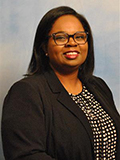It started with a simple statement: “We need a vision.” As the director of staff development for Gwinnett County Public Schools, I realized I was in trouble when similar sentiments echoed throughout our staff development team:
“When people ask what we do, I feel I am rambling through a list of activities.”
“We seem to take on everything because our work isn’t clearly defined.”
“I can explain what I do each day, I know it matters and it’s meaningful, but how does it define who we are as a department?”
We had busied ourselves with being responsive to the varied needs of our customers. We had been thoughtful and deliberate in planning support and implementation, yet had failed to pause and define our work to ensure our efforts were supporting overarching goals.
Our department has a mission and vision posted on the webpage. However, in the spirit of continuous quality improvement, which is embedded in the culture of our organization, we needed to revisit our vision and ensure it reflects the essence of our work. So, like any self-proclaimed reflective professionals, we had to deeply examine my context, our processes, and desired products.
Context
We started to explore the DNA of our team by engaging in a modified version of the Becoming One Community protocol. This protocol allowed each of us to hear the story of this department from the lens of individual team members based on when they joined the team. Through this process, we quickly uncovered many of the unspoken norms that are embedded in our work today. Each person shared why he or she joined the team and what he or she hoped to contribute to the organization. The team also envisioned the future and where they hoped to grow. This team was not confused about the “what” of the work, but they needed to align the “why” of the work. Allowing the time to reflect on the context reaffirmed the vision problem, and I needed to identify the best approach to engaging in this work.
Process
We needed a fresh lens to create rich, meaningful conversations about why we do what we do. Becoming a Learning System became that common text to shape the process and deepen our understanding regarding the team’s purpose and what the team hopes to achieve. We engaged in deep discussions about beliefs and values and how it often conflicts with the actions of the team. We debated practices and policies (overt and covert) that support or interfere with the definition high quality professional learning. The most passionate dialogue emerged when we discussed perceptions of the role of the staff development team (personal perceptions as well as those of stakeholders). Then, I realized I needed to engage our stakeholders in the conversation as well.
I convened our Staff Development Advisory Board to find out why they called the staff development office. Although it was a simple question, the responses were informative and provided rich content to propel the vision work. I was fully invested in producing a product that drives the work of the team.
Product
Our team is still working to produce the final product. The team collaborated and created SMART goals (Specific, Measurable, Attainable, Realistic, Time bound) aligned to the Standards for Professional Learning. The team identified the tiers of support the office provides (for individuals, teams, and system).
What I have learned through this process is the power of a vision is more than the words on paper. The reach of developing a vision is more important than a one-minute elevator speech. It is the tug-of-war that a group of inspired individuals engage in regarding purpose, values, and behaviors to align thoughts and practices that ensure the vision is the work.
What are your experiences with drafting a vision statement? How does your vision or the vision for your organization show up in your work every day?








